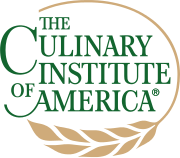What do they do?
Mix and bake ingredients to produce breads, rolls, cookies, cakes, pies, pastries, or other baked goods.
Also known as:
Baker, Bread Baker, Cake Decorator, Dough Mixer, Mixer, Pastry Chef, Pastry Cook, Scaler, Sponge Setter
-
1.8%
Change
Ranks #55 in job growth rate1,290Job Openings
Ranks #10 in net job growth
Looking for colleges that offer a specific major? Use the College Match Tool to find your best-matched schools and discover your estimated Net Price!
- High school diploma equivalent (38%)
- Some college, no degree (20%)
- Less than high school diploma (20%)
- Bachelor's degree (11%)
- Associate's degree (9%)
- Master's degree (1%)
- Doctorate or Professional Degree (1%)
People in this career often know a lot about:
- Production and Processing - Knowledge of raw materials, production processes, quality control, costs, and other techniques for maximizing the effective manufacture and distribution of goods.
- Customer and Personal Service - Knowledge of principles and processes for providing customer and personal services. This includes customer needs assessment, meeting quality standards for services, and evaluation of customer satisfaction.
- Food Production - Knowledge of techniques and equipment for planting, growing, and harvesting food products (both plant and animal) for consumption, including storage/handling techniques.
People in this career often do these activities:
- Evaluate quality of food ingredients or prepared foods.
- Adjust temperature controls of ovens or other heating equipment.
- Load materials into production equipment.
- Operate cooking, baking, or other food preparation equipment.
- Measure ingredients or substances to be used in production processes.
- Inspect food products.
- Monitor equipment operation to ensure proper functioning.
- Clean production equipment.
- Maintain production or processing equipment.
- Determine food production methods.
- Apply protective or decorative finishes to workpieces or products.
- Operate cutting equipment.
- Shape clay or dough to create products.
- Direct operational or production activities.
- Order materials, supplies, or equipment.
- Record operational or production data.
- Create new recipes or food presentations.
This page includes data from:

 Occupation statistics: USDOL U.S. Bureau of Labor Statistics Occupational Employment Statistics
Occupation statistics: USDOL U.S. Bureau of Labor Statistics Occupational Employment Statistics
 Videos: CareerOneStop, USDOL/ETA and the Minnesota Department of Employment & Economic Development
Videos: CareerOneStop, USDOL/ETA and the Minnesota Department of Employment & Economic Development











